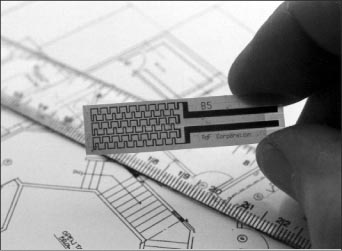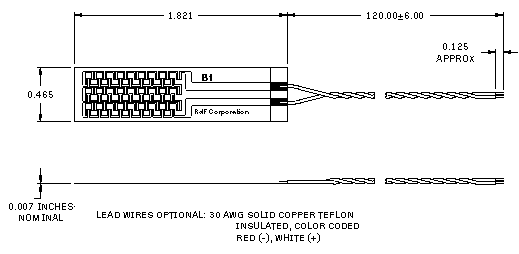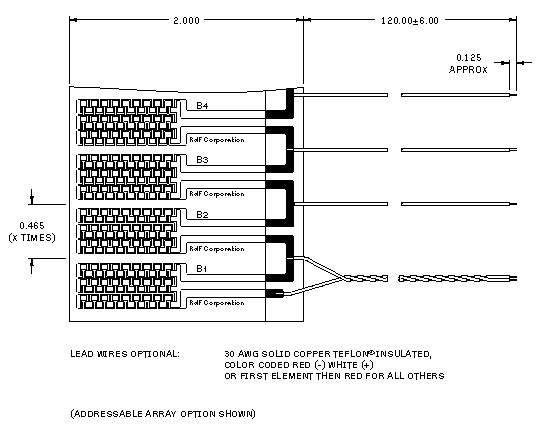| DATA SHEET HFS-C | |
 |
 |
|
 |
||
|
Features |
Applications Include
|
|
RdF’s new low cost planar heat flux sensor self-generates an interchangeable, linear mV measurement of heat flux in or out by all modes: convection, conduction or radiation. Output polarity defines the direction of the net total heat flux measured at up to 150°C. Exclusive features include the interchangeable mV output and a conformable, sealed configuration for lamination or surface mounted application. Edge connections can be soldered. Adhesive backing and addressable wide area sensor arrays are available. Temperature control can be enhanced by reacting to heat flux changes detected before temperature can change. Building controls systems can add real time reaction to solar and wind loads. |
RdF’s Micro-Foil® Heat Flux Sensors feature true iso-thermal properties. Thermal losses are kept to a minimum and highly accurate readings are obtainable because of their extremely thin construction (Low thermal impedance). The mV or mV output is proportional to the heat flux passing through the sensor thickness. Their sensitivity is controlled by the thickness of the thermal barrier and the number of thermocouple |
|





